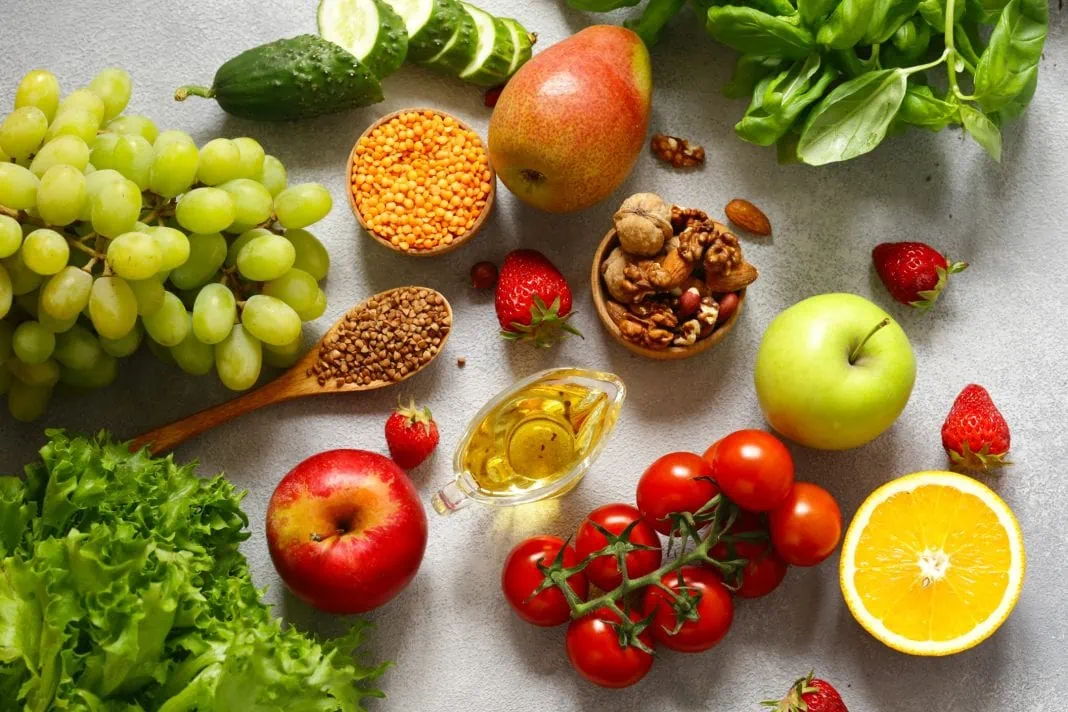We are all aware of the importance of getting enough fresh fruit and vegetables in our diet, yet most of us fail to accomplish that. Plus, the old “5 servings a day” recommendation recently turned into “7 servings a day”. But how much is enough?
A study, published in the Journal of Epidemiology & Community Health measured the health benefits of eating different amounts of fruits and veggies daily. Even eating a little fresh produce daily is much better than eating none, but the benefits dramatically increase with the quantity.
According to the research, people who ate 1-3 servings of fruits and vegetables a day had a 14% lower risk of dying (from any cause), the ones who consumed 3-5 servings daily had a 29% lower risk and eating 5-7 servings a day was associated to 36% lower risk.

Considering this new evidence on the benefits of eating fruits and vegetables, it’s obvious that most of us are not getting enough of them. However, the “7 servings a day” is vague, considering a 130-pound 20-year-old woman can’t have the same nutritional needs as a 200-pound 60-year-old man (just one example out of an endless list of possibilities).
For this reason, the USDA provides us with the necessary information on vegetable and fruit serving sizes and the daily number of servings required based on age and gender.
How much is one serving of fruits or vegetables?
The basic unit for measuring one serving is one cup for vegetables & vegetable juice, two cups for leafy greens like spinach and lettuce, one cup for fresh fruits and fruit juice and ½ for dry fruits.
It would be hard to check a chart every time you want to eat fruits or veggies, which is why we are offering you some basic measurements to get you started so you can perform rough measurements without using documentation.
 Fruit Serving Sizes
Fruit Serving Sizes
The following amounts count as 1 cup (serving) of fruit:
- 1 small apple
- 1 large banana
- 1 cup of grapes
- 1 large orange
- 1 medium grapefruit
- 1 large peach
- 1 medium pear
- 1 cup of pineapple (in any form)
- 2 large or 3 medium plums
- 8 large strawberries or 1 cup of strawberries
- 1 small wedge of watermelon or 1 cup of diced watermelon
- ½ cup of dried fruit (apricots, raisins, prunes…etc.)
- 1 cup of fruit juice
 Vegetable Serving Sizes
Vegetable Serving Sizes
The following amounts count as 1 cup (serving) of vegetables:
- 1 cup of chopped broccoli
- 1 cup of cooked greens (kale, collards, mustard greens, turnip greens)
- ½ of raw spinach and leafy greens (lettuce, romaine, iceberg, watercress, endive, escarole…etc.)
- 1 cup of carrots (in any form)
- 1 cup of pumpkin
- 1 large red/green pepper or 1 cup chopped red/green peppers (raw or cooked)
- 1 large tomato or 1 cup of sliced tomato (raw or cooked)
- 1 cup of tomato juice
- 1 large (baked) sweet potato or 1 cup mashed or sliced (cooked)
- 1 cup winter squash (cooked)
- 1 cup of cooked dry beans and peas (whole or mashed)
- 1 cup of corn
- 1 cup of green peas
- 1 medium boiled/baked white potato or 1 cup mashed/diced
- 1 cup of cooked beansprouts
- 1 cup of chopped/shredded green cabbage (raw or cooked)
- 1 cup of pieces/florets of cauliflower (raw or cooked)
- 1 cup of sliced/diced celery (raw or cooked)
- 1 cup of raw sliced/chopped cucumbers
- 1 cup of cooked green beans
- 1 cup of mushrooms (raw or cooked)
- 1 cup of chopped onions (raw or cooked)
- 1 cup of sliced/diced cooked zucchini
There you go! These are the serving sizes for the most common fruits and vegetables. Now all you need to know is how many servings of each you need every day. The USDA provides the recommendations listed below for individuals who get less than 30 minutes a day of moderate physical activity on top of normal daily activities. Your requirements might be higher if you are more active.
Daily fruit serving requirements based on age and gender
Children
– 2-3 yrs old: 1 cup
– 4-8 yrs old: 1 – 1 ½ cups
Girls
– 9-18 yrs old: 1 ½ cups
Boys
– 9-13 yrs old: 1 ½ cups
– 14-18 yrs old: 2 cups
Women
– 19-30 yrs old: 2 cups
– 31+ yrs old: – 1 ½ cups
Men
– 19+ yrs old: 2 cups
Daily vegetable serving requirements based on age and gender
Children
– 2-3 yrs old: 1 cup
– 4-8 yrs old: 1 ½ cups
Girls
– 9-13 yrs old: 2 cups
– 14-18 yrs old: 2 ½ cups
Boys
– 9-13 yrs old: 2 ½ cups
– 14-18 yrs old: 3 cups
Women
– 19-50 yrs old: 2 ½ cups
– 51+ yrs old: – 2 cups
Men
– 19-50 yrs old: 3 cups
– 51+ yrs old: 2 ½ cups


